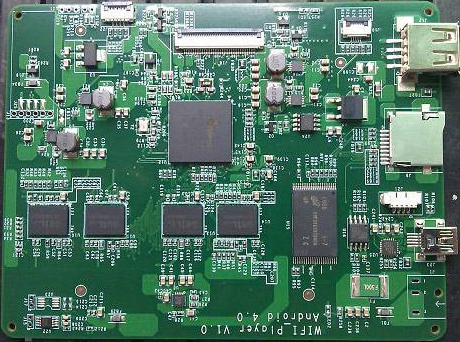There are three basic forms of welding between wires and wires: lap welding, hook welding and wire bonding.
PCB wire and wire welding skills PCB proofing
Lap welding: bonding the tinned wire to another tinned wire. This method is the simplest, but the strength is the lowest, and the reliability is the worst. It is only used for temporary wiring or inconvenience during maintenance and debugging. Winding, hook welding and some long-term welding of inserts. When welding, we must pay attention to the fact that the welding wire cannot loosen from the beginning of welding to the solidification of the solder.
Welding: Tin-plated wire is bent into a hook shape, connected together and clamped with pliers for welding. The strength of hook welding is lower than that of welding, but the operation is simple and convenient.
Seam welding: Winding the tinned wire and then welding. The thickness of the wires is different. The welding method is different. If the wire is thick and thin, the thin wire can be wound on the thick wire. If the wire thickness is the same, the wire can be twisted. And tightening methods. The specific winding method is shown in Figures A and B. The reliability of welding is the highest, so the welding method is usually used for welding wire and welding wire.
PCB wire and wire welding skills PCB proofing
The connection between the wires is mainly based on welding, and the welding steps are as follows:
1) Remove a certain length of wire from the insulating cover as needed;

2) Pre-welded wire;
3) Open a heat-shrinkable tube of appropriate diameter for the wire;
4) Twist and weld two or more wires;
5) Heat the shrink tube and fix the wire joints after the heat shrink tube has cooled.
PCB wire and wire welding skills PCB proofing
Second, desoldering skills
1. For components with a small number of smt component pins, such as resistors, capacitors, diodes and transistors, first solder the solder to a pad on the PCB, then use tweezers to fix the component to the mounting position and fix the circuit board on the left hand. Use a soldering iron to solder the pins on the tinned pad with your right hand. The left hand can be loosened, and the tin wire is used to solder the remaining legs. As long as you use a soldering iron to remove the components, you can easily remove these components. The ends are heated at the same time, and after the tin is melted, the components can be taken out by gently lifting.
2. For components with more pins on the smt chip processing component, similarly apply SMD components with wider pitch. First, tin a pad, and then solder the left hand with tweezers. Okay, solder the remaining feet with tin wire. It is usually better to use a heat gun to disassemble these parts. Hold the heat gun for blow welding and use pliers (such as tweezers) with your other hand to remove the parts.
3. For components with high pin density, the soldering steps are similar, that is, solder one leg first, and then solder the remaining pins with tin wires. The number of pins is relatively large and dense, and the pins are aligned with the pads. This is the key. Usually, the pads on the corners are plated with only a small amount of tin. Use a pair of tweezers or hands to align the component with the pad. The sides of the pins are aligned. Press firmly on the components on the PCB board. Use a soldering iron. Solder the corresponding pins of the tin pad.